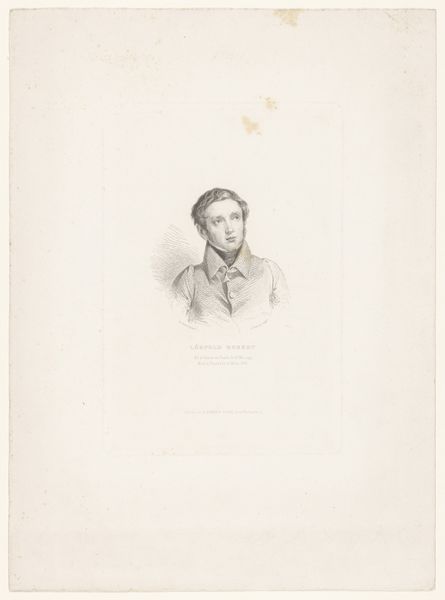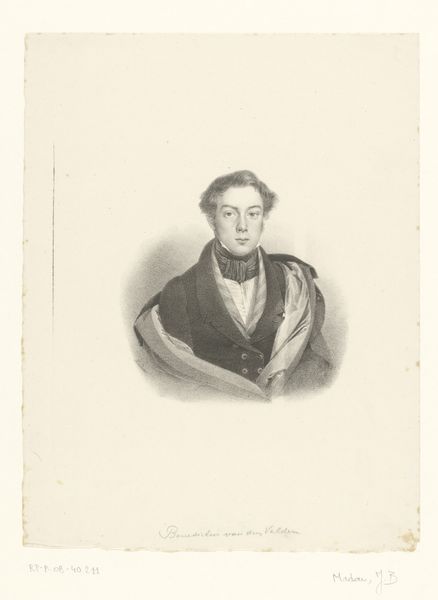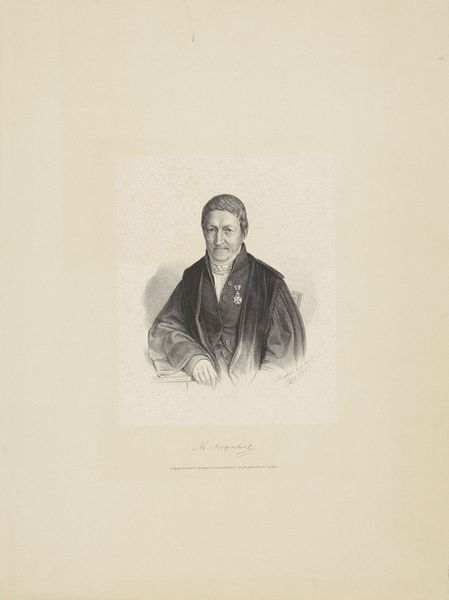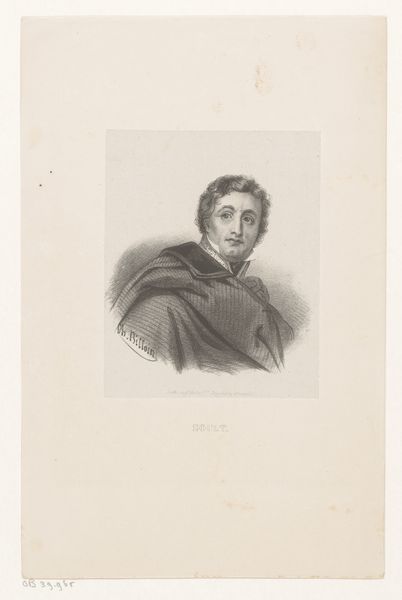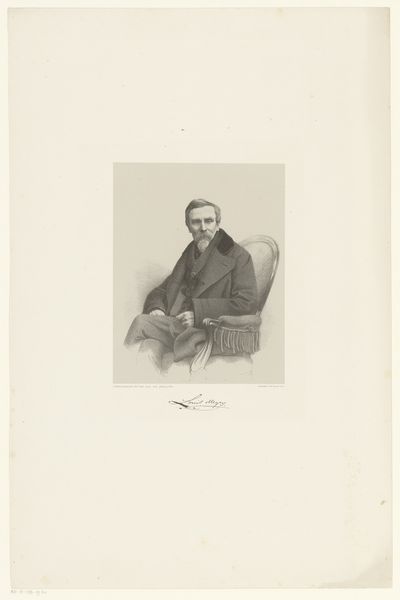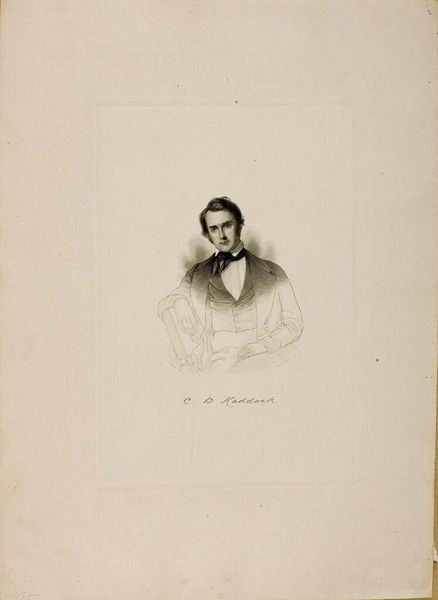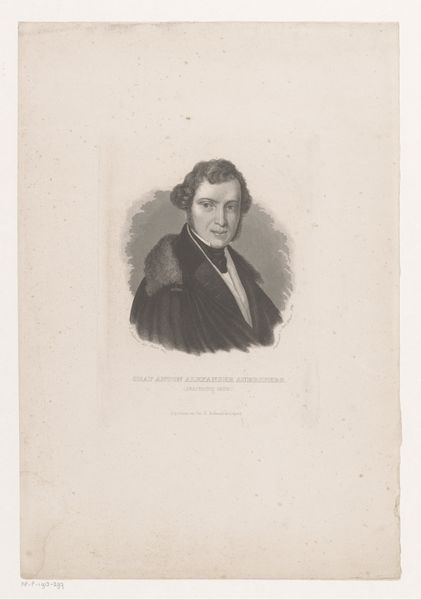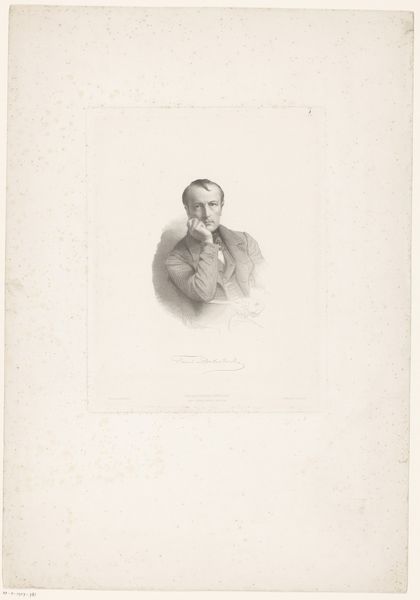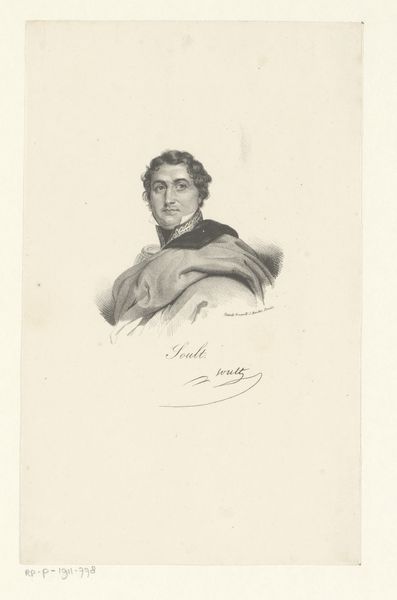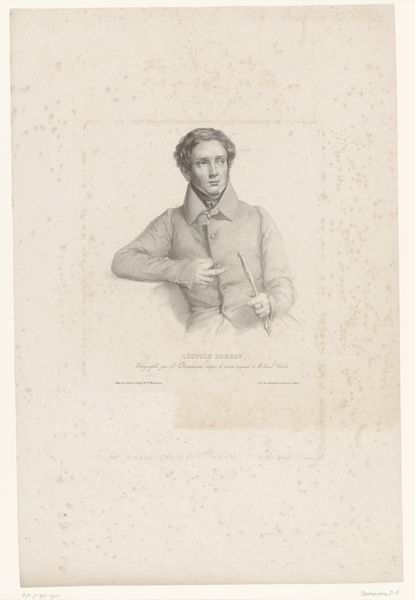
print, engraving
#
pencil drawn
# print
#
pencil sketch
#
old engraving style
#
pencil drawing
#
history-painting
#
engraving
#
realism
Dimensions: height 322 mm, width 245 mm
Copyright: Rijks Museum: Open Domain
Curator: Here at the Rijksmuseum, we have an engraving from sometime between 1822 and 1845 titled, "Portret van schrijver Christiaan Hendrik Clemens." Editor: It's a surprisingly intimate portrait, despite the formal attire. The soft rendering creates an almost melancholic atmosphere. I'm immediately drawn to the way his hand rests on what appears to be his dog. Curator: Knowing Clemens was a writer deeply embedded in the political and intellectual currents of his time, especially his conservative views, this image offers a fascinating perspective. It humanizes a figure known for his often-uncompromising stances. The dog becomes almost allegorical. Editor: Agreed. The engraving itself, its creation from metal plate, is key. Think of the repetitive, skilled labor needed to achieve this level of detail in replicating the drawing. The stark contrast evokes a sense of manufactured authority, a deliberate projection. Curator: Yes, and consider the broader discourse around portraiture in that period. While seemingly straightforward, portraiture always reflects specific power dynamics—who gets memorialized, in what style, and by whom. Editor: And let's not forget, engravings were mass-produced. This wasn’t about a singular, precious object. This portrait, as a commodity, circulated Clemens’ image and, thus, his ideas among a wider audience. It brings Clemens, a Dutch conservative, closer to the masses. Curator: This intersection of art and material production also gives us the opportunity to reevaluate ideas surrounding high art. Engravings have often been seen as a lesser art form compared to painting. By focusing on Clemens, we have an image of a writer that could reach many social classes. Editor: Absolutely, this work challenges hierarchies. Thinking about the process reminds us how art reflects and shapes societal values. What seems like a simple portrait opens a conversation about production, distribution, and the politics of image-making. Curator: Reflecting on this, I find myself drawn to this work's invitation to consider the historical context that has shaped individual and collective memory. It allows a lens into past ideas about cultural consumption. Editor: Yes, I think I agree that, although quiet in tone, the materials offer an interesting and unique perspective, making it worthwhile to explore the world of prints more often.
Comments
No comments
Be the first to comment and join the conversation on the ultimate creative platform.
